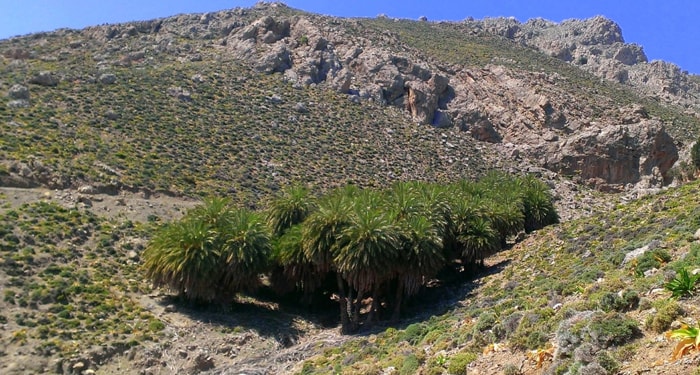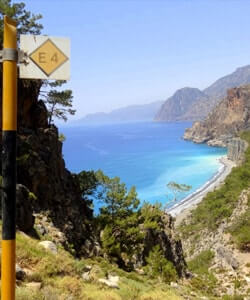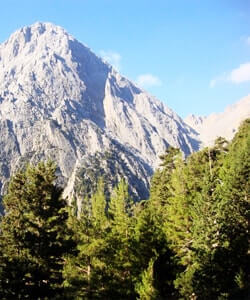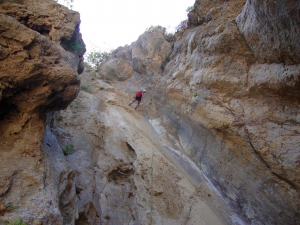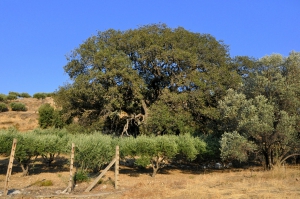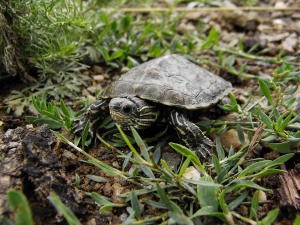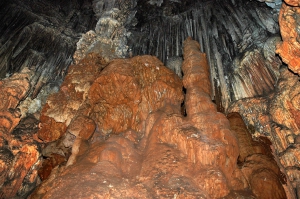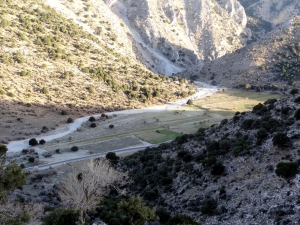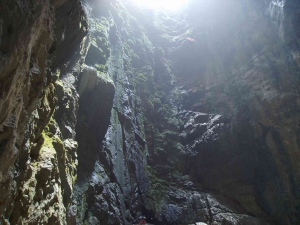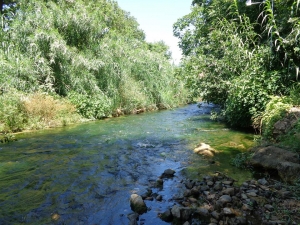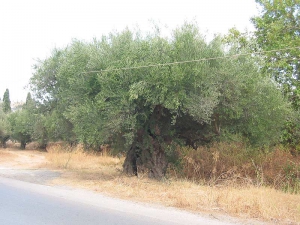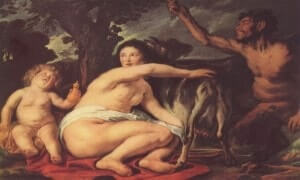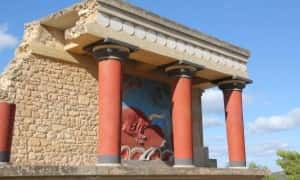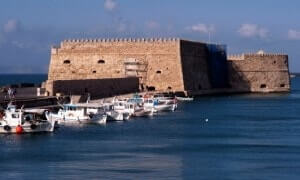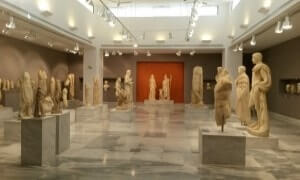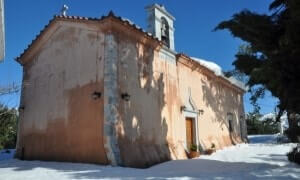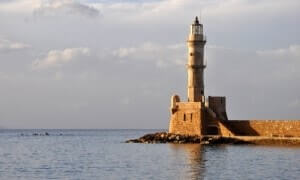The gorge of Psaro Nero is located 55km southeast of Heraklion. It is a short inaccessible canyon with high waterfalls (rapels), very well known to canyoners of Crete. Psaro Nero with its wonderful rock formations has water till late spring. It is initially open and closes abruptly close to the end, where the high rappels are (the highest is 25m). The gorge empties into Baritis River, a tributary of Anapodaris, near Katofygi.
The oak of Madalenis or Manalenis is located near the village Korfes. This centenarian oak has been declared a natural monument. It is said that under the branches, that today touch the ground due to their size, assemblies of the rebels in the area took place during the Greek revolts.
In Crete it is found anywhere there is fresh or brackish water. You'll see them sunning on the banks of rivers. When you approach their area, they disappear before you know it making a loud "plop". Crete is warm enough for them so they remain active throughout the year, but in times of drought they may get buried in the mud and hibernate during the summer.
The sinkhole Tafkos Palmeti is located on the Strouboulas Plateau and its depth is 44m. The name comes from the Christian rebel Giannis Palmetis (1790 – 1834 had his shelter in Strouboulas and watched the road to Rethimnon. When he was seeing an Aga passing by, he was shooting him, he was taking from him all he had and was throwing him in the gulf, which from then is called the Tafkos of Palmetis, in order to exterminate every trail.
The small plateau of Erganos is located at an altitude of 950m at the southern slopes of Dikti Mounts and takes its name after the ancient town of Erganos that was built on the adjacent peak Kefali. The plateau is used today for growing vines, while the views of the surrounding wooded peaks and the valley of Embaros is very nice.
It is a 70m deep well with a large opening (7m wide) that allows light to penetrate for several meters, permitting the growth of vegetation on its walls. The first descent is 58m high and at its end we meet a room of 16m x 7m. There is also a stack of stones, 7m high.
The river Keritis is located near Chania and belongs to the rivers with the largest water supply in Crete. It gathers the waters of the massif Lefka Ori from the area of Zourva and Meskla. After a course of more than 25 km it ends at the beach of Platanias. During its flow it merges with many streams and tributaries.
The olive tree is located on the right side of the road heading from Sitia to Piskokefalo and locals call it fourkolia, i.e. the olive tree where the Christians were drowned by hanging by the Turks. Unfortunately, the tree has been damaged severely due a car crash.





